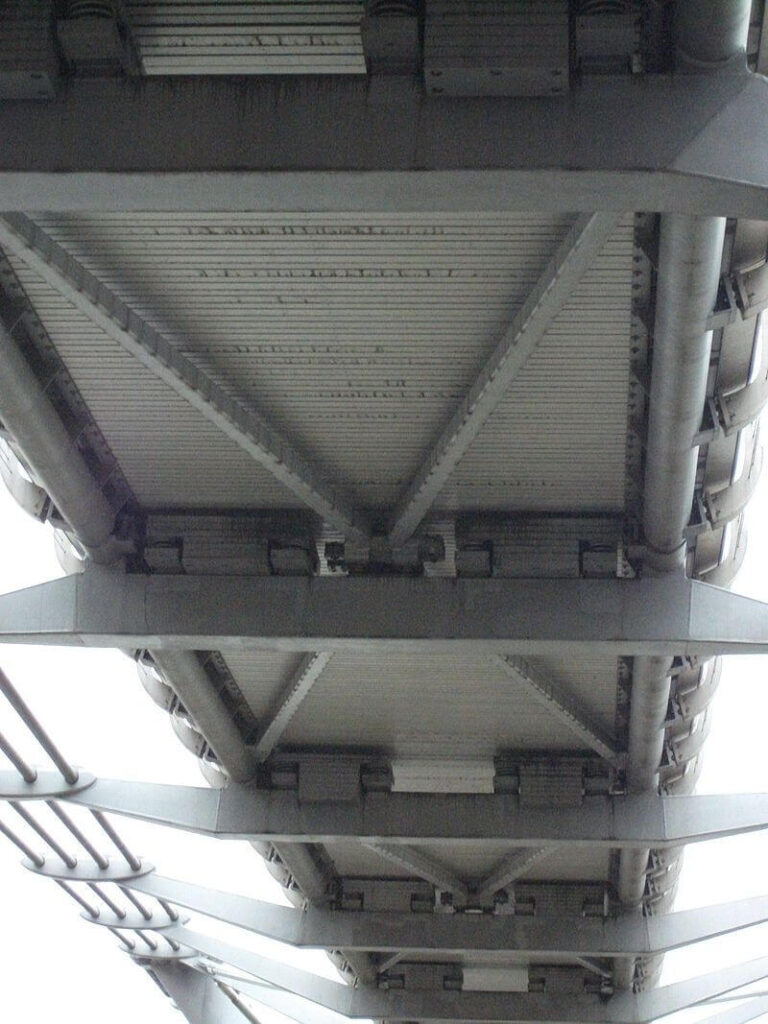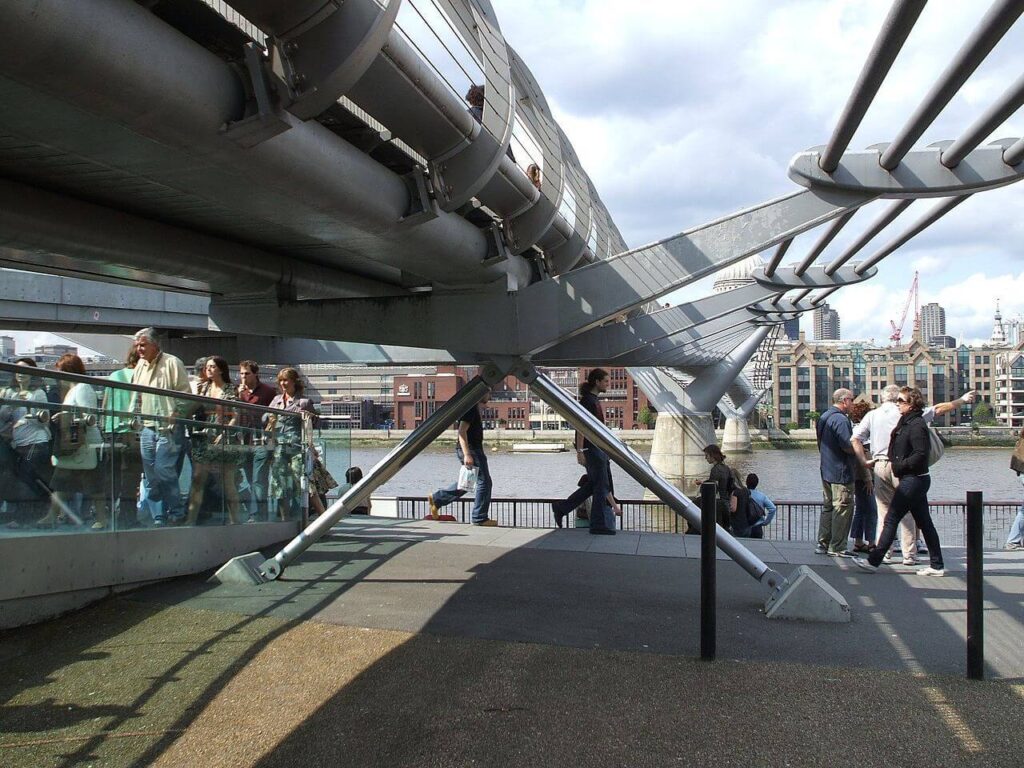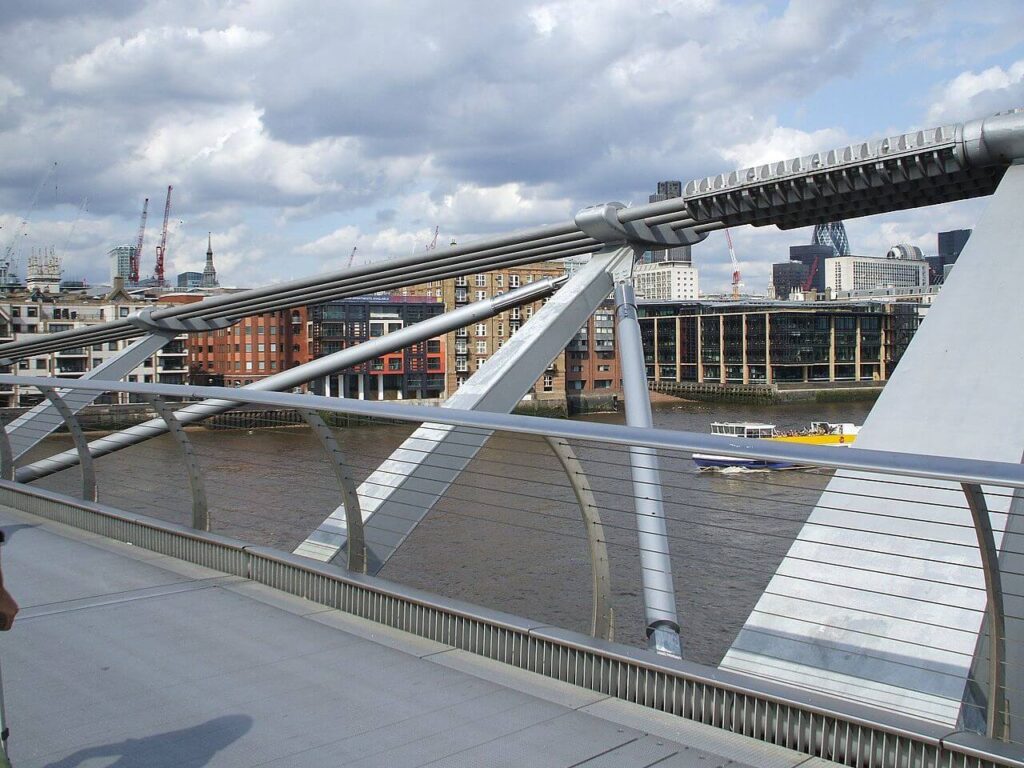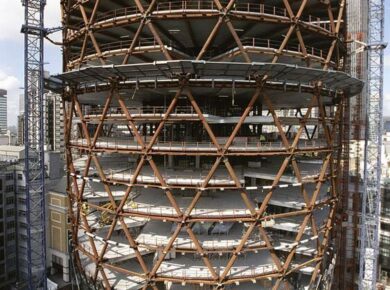10 June 2000: Opening of the Millennium Bridge
The Millennium Bridge, officially known as the London Millennium Footbridge, is a steel suspension bridge for pedestrians crossing the River Thames in London, linking Bankside with the City of London. Construction began in 1998, and it initially opened on 10 June 2000.
Londoners nicknamed it the “Wobbly Bridge” after pedestrians experienced an alarming swaying motion on its opening day. The bridge was closed later that day and, after two days of limited access, it was closed again for almost two years so that modifications and repairs could be made to keep the bridge stable and stop the swaying motion. It reopened in February 2002.

Photo: AlisonW (Alison M Wheeler)
The design was an innovative “blade of light” effort from ARUP, Foster and Partners, and Sir Anthony Caro. Due to height restrictions, and to improve the view, the bridge’s suspension design had the supporting cables below the deck level, giving a very shallow profile. The eight suspension cables are tensioned to pull with a force of 2,000 tons against the piers set into each bank—enough to support a working load of 5,000 people on the bridge at a time.

Photo: Ibex73
Resonance
The bridge’s movements were caused by a positive feedback phenomenon, known as synchronous lateral excitation. The natural sway motion of people walking caused small sideways oscillations in the bridge, which in turn caused people on the bridge to sway in step, increasing the amplitude of the bridge oscillations and continually reinforcing the effect.
Engineers at Arup, the company that designed the bridge, conducted research into the unexpected oscillation. They concluded that making the bridge stiffer, to move its resonant frequency out of the excitation range, was not feasible as it would greatly change its appearance.

Photo: KlickingKarl
Instead, the resonance was controlled by retrofitting 37 viscous fluid dampers to dissipate energy. These include 17 chevron dampers – long V-shaped braces under the deck panels – to control lateral movement, 4 vertical to ground dampers to control lateral and vertical movements, and 16 pier dampers to control lateral and torsional movements. Additionally, 52 tuned mass dampers add inertia to control vertical movement. After a period of testing, the bridge was reopened and has not been subject to significant vibration since. (source: Wikipedia)
Photos: Dave Farrance / Sandpiper
About the Author:

Bruno Dursin – Managing Director at Believe in Steel. Bruno has more than 30 years of experience in promoting steel & steel solutions. His clients benefit from his extensive network within the building industry.






